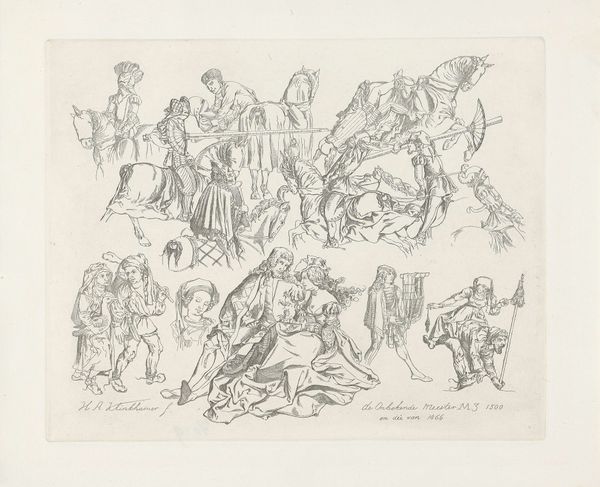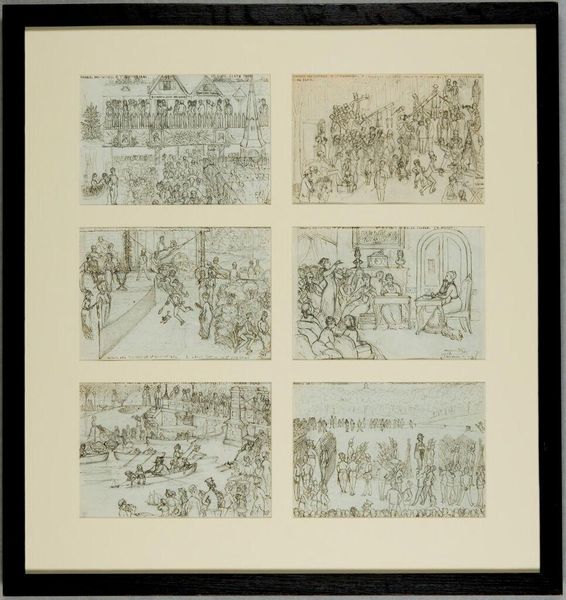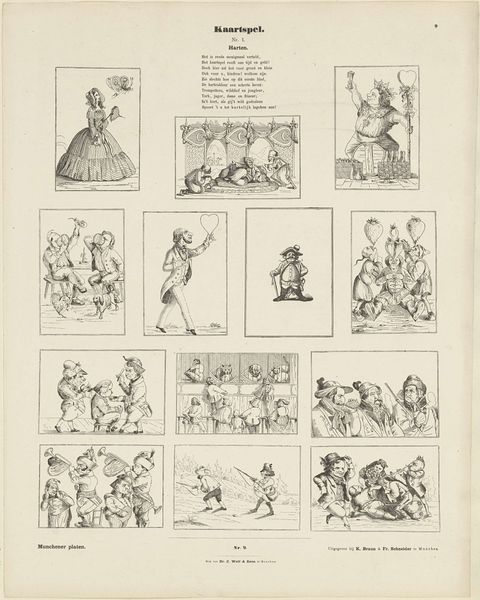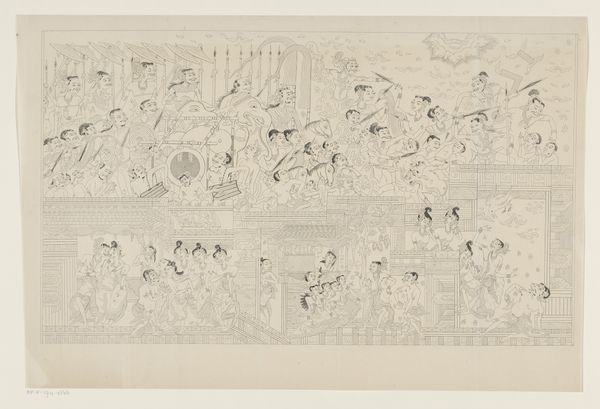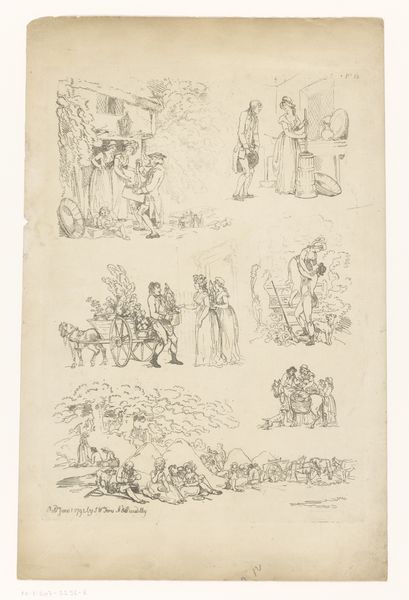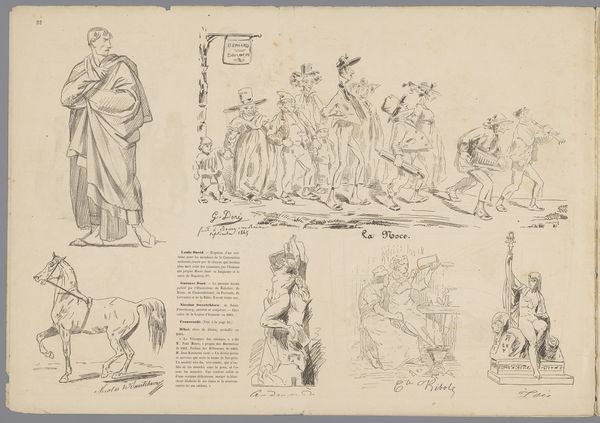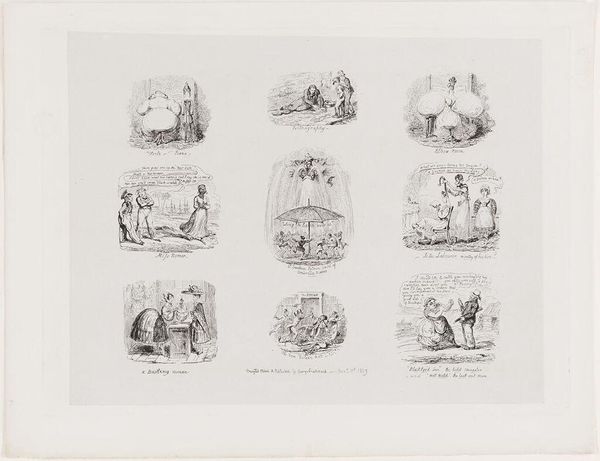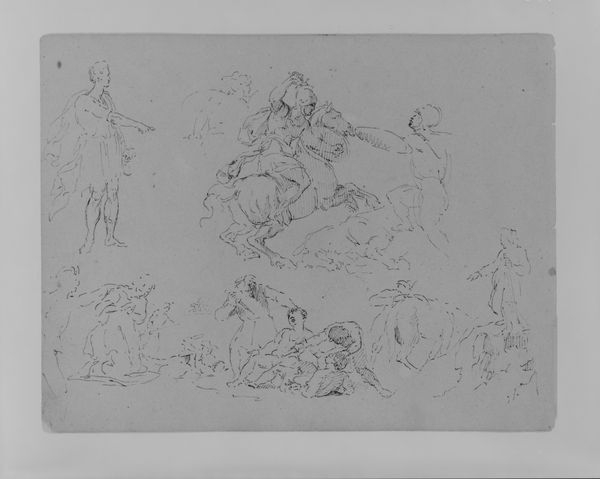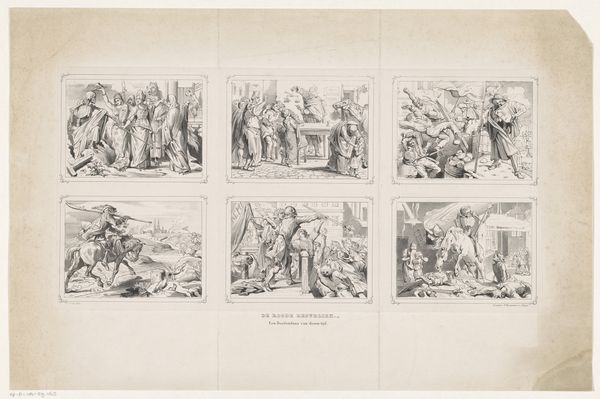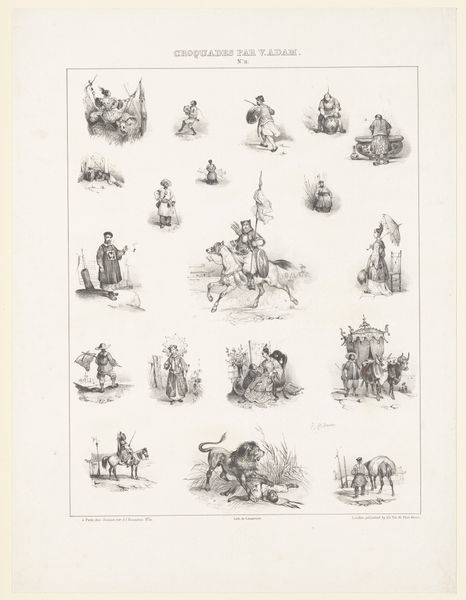
Sleutel op de vier prenten van de laatste dagen van Lodewijk XVI door Luigi Schiavonetti 1796
0:00
0:00
#
comic strip sketch
#
pen illustration
#
ink line art
#
personal sketchbook
#
linework heavy
#
idea generation sketch
#
sketchwork
#
ink drawing experimentation
#
sketchbook drawing
#
storyboard and sketchbook work
Dimensions: height 393 mm, width 475 mm
Copyright: Rijks Museum: Open Domain
Curator: Looking at "Sleutel op de vier prenten van de laatste dagen van Lodewijk XVI door Luigi Schiavonetti", made in 1796, a certain starkness in the linework announces itself quite powerfully. Editor: Yes, there's a real sense of constraint, isn't there? The pen and ink feels economical, almost journalistic. It's like we're witnessing a sequence of events documented rapidly, emphasizing the factual over embellishment. Curator: I find the choice of rendering these historical moments as a sequence, almost like frames from a film, interesting. Schiavonetti, through his visual shorthand, delivers potent symbols: Louis saying goodbye to his family, addressing the National Convention, all prefigure a dramatic, unavoidable conclusion. Editor: Absolutely. You can sense the layers of class dynamics being scraped bare through the cheap and easily reproduced ink and print format of the work. The focus isn’t on celebrating power through rare and precious material; instead, we witness the depiction of the stripping away of that power. Think about who would’ve bought and circulated images like these back then... Curator: A very astute point. Consider the loaded symbolism inherent to each tableau. Each of these contained moments serve as morality plays or exemplars. Louis shown, separated from loved ones, but facing fate and the Revolution is an emotional and political flashpoint, still powerful generations on. It echoes classic tropes of tragedy. Editor: The deliberate austerity and the lack of pretension in material highlight the crumbling edifice of power at the time. Instead, a new, burgeoning material culture rises with printed images widely shared among diverse audiences: revolution in action! I’d want to see what type of ink was available at the time and from which areas this publication came from! Curator: An intriguing way to consider the reach of such charged imagery, made all the more intense by Schiavonetti's keen grasp of composition and dramatic tension in these pivotal moments of the Revolution and French royalty. Editor: This work’s strength is how its basic materials became an eloquent narrator in their own right during momentous change. We, like those in 1796, are asked to reconsider how something is disseminated, perceived, and, ultimately, memorialized.
Comments
No comments
Be the first to comment and join the conversation on the ultimate creative platform.
